April 12, 2015
Feng Shui of Hutong Alleyways & Siheyuan Houses, Beijing, China
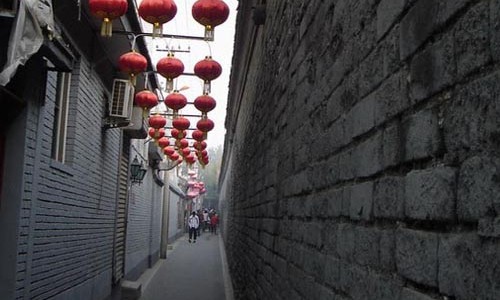
FENG SHUI OF HUTONG ALLEYWAYS AND SIHEYUAN HOUSES, BEIJING, CHINA
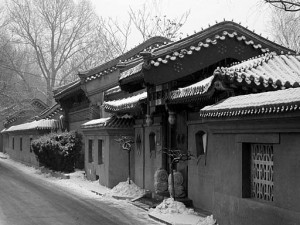
A HUTONG HOUSE IN CHINA
If you pay Beijing City a visit in China, remember to grab the opportunity to take a tour through the famous Hutong alleyways that connects the ancient residential houses known as Siheyuan. A Hutong is an alleyway formed by Siheyuan houses. A Siheyuan (Chinese: 四合院 which means Four Harmonious Courtyard) is a historical type of residence that was commonly found throughout China, most famously in Beijing. In English, Siheyuan are sometimes referred to as Chinese quadrangles. The name literally means a courtyard surrounded by four buildings. In ancient times, a spacious Siheyuan would be occupied by a single, usually large and extended family, signifying wealth and prosperity. Today, many remaining Siheyuan are still used as housing complexes, but many lack modern amenities.
During China’s dynastic period, emperors planned the city of Beijing and arranged the residential areas according to the social classes of the Zhou Dynasty. The term “hutong”, originally meaning “water wells”, appeared first during the Yuan Dynasty.
Since the mid-20th century, the number of Beijing Hutong Villages has dropped dramatically as they were demolished to make way for new roads and buildings. The Chinese government had then pronounced a lot of Hutong Villages as protected areas.
A Siheyuan residential house is surrounded by four parts of buildings that link each other, forming a square with an empty space at the middle. What is the reason behind this unique formation of buildings that form one single residential house?
Master Tham explained that these ancient residential houses were built and designed in square shapes which face 4 different directions and there are a lot of Feng Shui reasons behind this unique architecture. Each residential building in a Siheyuan house have their own Feng Shui properties. There are a lot of Feng Shui theories about the architecture of a Siheyuan residential house. Master Tham will now explain further about the Feng Shui of Siheyuan residential houses through the true perspective of Feng Shui.
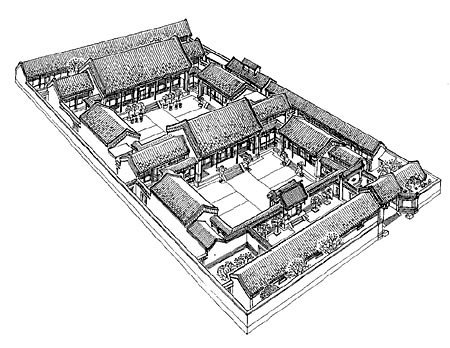
A BIRDS EYE VIEW OF A HUTONG HOUSE
SIHEYUAN HOUSES AND THEIR CHARACTERISTICS
Siheyuan houses hold one of the oldest and ancient Chinese architectures in the world. Nearly all Siheyuan had their main buildings and gates facing south for better lighting and to avoid the Northern Cold Wind; thus a majority of hutongs run from east to west. Between the main Hutongs, many tiny lanes ran north and south for convenient passage. The widths of ordinary pathways are around 24 steps wide while narrow Hutongs are only about 12 steps wide. Inside each of these houses, there are no open air spaces except at the middle of all the residential house where an empty square area was completely exposed to the sky. This exposed area is normally used as a garden and the residents will come out to have family activities such as drinking tea and talk with the family members, or playing with their children. Each main door of these ancient Siheyuan holds the signboard that tells people the family who are currently occupying the residential house. Most of the signboards are fitted with family surnames.

INTERNATIONAL FENG SHUI MASTER THAM IN HUTONG, BEIJING
Master Tham took a deep breath and said, ‘When Beijing starts to develop, a lot people started to demolish these ancient Siheyuans and Hutongs to build big roads and buildings. The ordinary Feng Shui properties were crushed and most of the ancient architectural characteristics were disrupted. Old Hutong Alleyways were widen up for car transportation and had been replaced by tar roads while old buildings with Feng Shui structures had been torn down for the development of new buildings. Nowadays, there are very little Hutongs and Siheyuan houses left in Beijing, so few that the government started to pronounce them as protected areas. These houses and alleyways are inter-connected to form a good Feng Shui property and they features how Feng Shui is widely practiced and implemented by the ancient people of China.
FENG SHUI OF HUTONGS AND SIHEYUAN IN ARCHITECTURAL PERCEPTION
The Siheyuan houses are compactly arranged together and the back side of the Siheyuan is very narrow, full of other houses. The Main door is connected by the wide main road. Narrow and compacted housing is presumed to have bad Feng Shui. However, these Siheyuan houses are seperated by Hutongs and thus, creating small spaces between each houses. Master Tham explained that the main road is very wide and this architectural design had changed the Feng Shui of Siheyuans and Hutongs completely. Master Tham added that houses that are compacted but have a wide and low main road is good as this enables good Chi flow to enter each residential house.
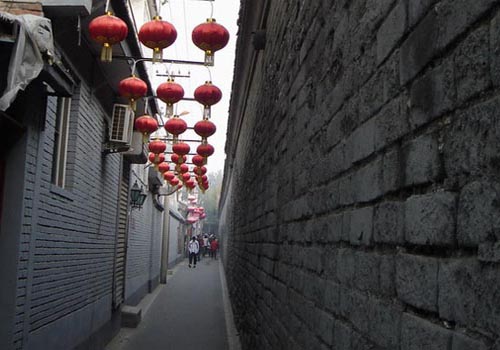
IMPORTANCE OF HUTONG ALLEYWAYS
CHI FLOWS THROUGH ALLEYWAYS
Hutong Alleyways normally have small drains at their sides, connecting each other Hutongs and the main road. The Hutong Alleyways is very important in destining the Feng Shui of a Siheyuan residential area. They are built with the advice of great Feng Shui masters that forms the arrangement accordingly to Feng Shui principles. A single renovation on a Hutong alleyway is capable in disrupting the good Feng Shui of the entire area. This is because the flow of Chi is disrupted and will not be able to harmonize each other as it flow through the main road and into the other pathways.
IMPORTANCE OF OPEN SPACE FENG SHUI
In ancient times, there is definitely an open space area in any type of residential buildings. The open space was carefully designed according to Feng Shui principles to allow rain water to water the plans and trees which gave out strong positive energy to the occupants. Rain that falls in the evenings had Yin Properties that brings comfort and peace to the occupants. Master Tham explained that open airs enables sunlight to enter each residential house. The sunlight had Yang Chi properties that will bring good luck and signifies success as they shine into the residential houses – into the rooms of the occupants. Therefore, a Siheyuan has very good Feng Shui if the middle of the Siheyuan is exposed to sunlight and rain as both Yin and Yang energies are able to balance up each other. This produce an extremely comfortable and peaceful environment with good Feng Shui features that will bring good luck, success, happiness, and peace to the occupants. This is the reason why Master Tham always advise his clients that each empty land should not be always covered with concrete, but to be filled with suitable plants.
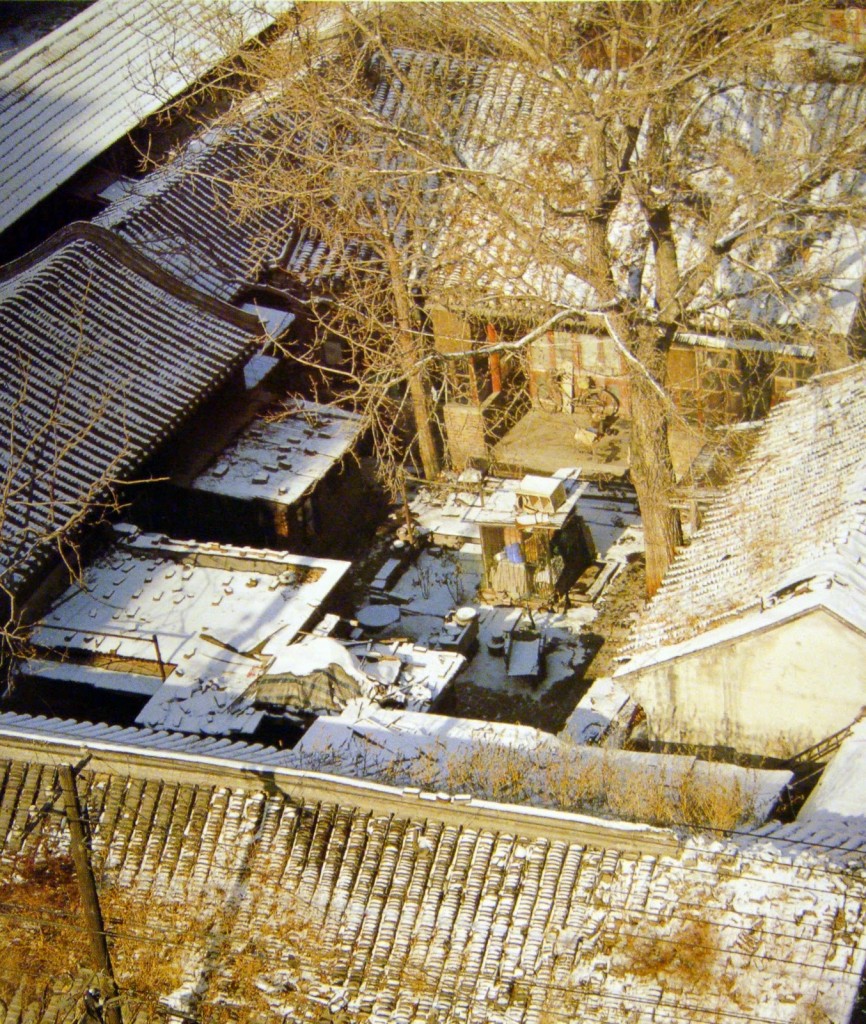
A SQUARE GARDEN AT THE CENTRE OF HUTONG
THE FENG SHUI GARDEN
The open space area is supposed to be built into a garden in order to utilize the maximum potential of open space Feng Shui. Master Tham said ‘In an open space area, it is best to build a garden there instead of covering it with concrete. Plants can produce Living Chi if planted correctly and if the open space location is suitable.’ Master Tham added that a Feng Shui garden is able to hold the Yin energies to balance up the Yang energies during the day. A garden with Feng Shui properties can bring harmony and peace to the occupants. Suitable plants needed to be taken into consideration before planting them in the garden. Master Tham said that bamboo trees are suitable to be planted in Siheyuan gardens.

INTERNATIONAL FENG SHUI MASTER THAM TAKING A REST AFTER INSPECTING FENG SHUI IN A HUTONG HOUSE. THE LIVELY CHI HOLDER
Master Tham would like to remind everyone that Feng Shui is not to be judged through the matter of just the building’s architectural properties and geographical features, but the environmental factors, compatibility of occupants such as date of births and their horoscopes must be taken into consideration as well. Therefore, different locations of Siheyuans have different Feng Shui. Master Tham said that during winter, the North Wind will come. The back side of the Siheyuan is usually higher than the other sides so that it will be able to put up a good resistance against the North Wind from gushing into the open space at the middle of the quadrangular residential house. This enables the good and harmonized Chi that was accumulated in the middle of the Siheyuan to be entrapped and maintain in the residential house. Master Tham also said that the outer parts of the Siheyuan should be planted with flowers and not covered with concrete.
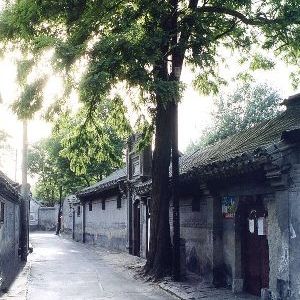
IN ANCIENT TIMES, DESCENDANTS OF A PARTICULAR FAMILY STAY AT HUTONGS FOR GENERATIONS.
A RESIDENTIAL HOUSE FOR DESCENDANTS
Descendants of a particular family used to stay together at these huge Siheyuan houses. A particular family will stay in the Siheyuan for generations and enjoy the good Feng Shui of it if the Feng Shui is good. However, if the Feng Shui is not good or not compatible with the occupants, the descendants will move out, face terrible calamities or grow old with loneliness. In relative to modern society, it is extremely important to consult a genuine and knowledgeable Feng Shui Master with proven records – who have true and genuine testimonials to remedy the Feng Shui of your house. Master Tham would like to remind all readers that Feng Shui is not something that you can master by just reading books or attending classes. One needed to learn it from a true Master who accepted him as his trusted disciple, learn it correctly from the correct source, practice it for years correctly, able to observe and investigate every Feng Shui properties, make research on all Feng Shui subjects and principles, and must have proof and testimonials to support his findings and services. Only then, one could be a Feng Shui Master who is able to serve the others.
Think carefully before you engage a Feng Shui Master. Many people who claim themselves as Feng Shui Masters normally likes to boast with their Feng Shui theories and diagrams but never had true and genuine testimonials from their successful clients.Therefore, make sure you don’t fall into their traps.